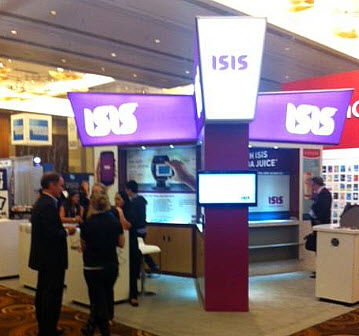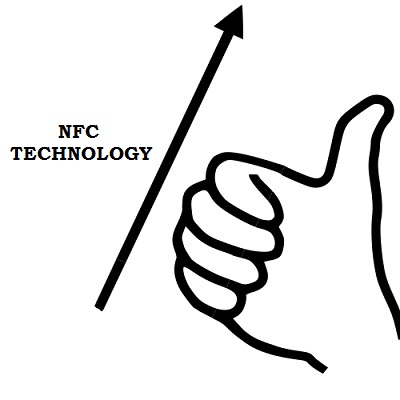The joint venture from T-Mobile, Verizon, and AT&T has now finally launched throughout the U.S.
The approach of the Isis mobile payments wallet launch was first reported by Mobile Commerce Press from the Money2020 event, and now the day has finally come in which the service has rolled out across the United States so that users will be able to use their devices to pay for their purchases.
Now the market is wondering whether or not Isis will be any more successful than its many competitors.
Although there are around 40 handsets that are considered to be compatible with Isis mobile payments, they still represent a considerable minority of the devices currently owned by Americans. This has generated significant skepticism as to whether or not the carrier backed venture will have any more luck than its primary competition, Google Wallets, which remains primary little known and little used.
Furthermore, there are many other barriers to adoption presented by this mobile payments method.
 Even among consumers who do have the right type of smartphones – which are exclusively Android based and require specific types of technology – using this mobile payments system isn’t merely a matter of obtaining the wallet app. Though an app is required from the Play Store in order to use the service, there is also a physical update that must be made to the device before purchases can be made.
Even among consumers who do have the right type of smartphones – which are exclusively Android based and require specific types of technology – using this mobile payments system isn’t merely a matter of obtaining the wallet app. Though an app is required from the Play Store in order to use the service, there is also a physical update that must be made to the device before purchases can be made.
In order to use the “contactless” mobile payments from Isis, the smartphone user with the right kind of Android device will need to head to AT&T, T-Mobile, or Verizon Wireless in order to obtain an “enhanced” SIM card in order to improve the security on the device so that it will be possible to safely use the service. Once that card has been activated, then credit and debit cards can be added to the digital wallet, and the consumer can find retailers, restaurants, and other locations which accept this form of transaction.
The number of shoppers across the United States who will actually choose to make this effort to select Isis mobile payments over others – or traditional card and cash-based methods – has yet to be seen.
The growth of the use of this tech has been quite slow but people are adopting near field communication.
It has been slightly over one year since mobile payments companies, such as banks and network operators, had been doing everything they could to make sure that they had worked NFC technology into their systems so that they would be able to keep up with what they felt was an overwhelmingly large opportunity as enabled devices would flood the marketplace.
They were under the impression that Apple would soon be releasing an enabled device.
Since that time, several Apple devices have been launched and not one of them has included the NFC technology that had been anticipated. Though the preparations for near field communications had skyrocketed, and the tech had been worked into everything from mobile wallets to marketing, the growth of the penetration of the actual devices occurred much more slowly than anticipated.
iPhones still do not feature NFC technology among their options and companies have had to look to other avenues.
 Google Wallet, Isis, and even MasterCard have all recently announced that although they have not abandoned their use of NFC technology, they are implementing additional methods in order to make sure that their services would be accessible by a larger number of consumers. For the most part, this has meant that QR codes – the two dimensional barcodes that had once been believed to have limited days left because of the upcoming popularity of near field communication tech – have been added to these massive systems.
Google Wallet, Isis, and even MasterCard have all recently announced that although they have not abandoned their use of NFC technology, they are implementing additional methods in order to make sure that their services would be accessible by a larger number of consumers. For the most part, this has meant that QR codes – the two dimensional barcodes that had once been believed to have limited days left because of the upcoming popularity of near field communication tech – have been added to these massive systems.
That said, it appears that all is not lost for NFC technology. The majority of the latest Android smartphones do contain these chips and as they start to spread throughout the world – and dominate the shipments of smartphones on a global scale – it has meant that systems relating to this tech are starting to launch. Though they haven’t taken off at the rate that had been initially expected, they are now experiencing a healthy, moderate growth.
In fact, according to Strategy Analytics market research, though the expectations for the demand for NFC technology have been reduced, it is still estimated that by the end of 2017, payments using this tech will have reached $48 billion.
 Even among consumers who do have the right type of smartphones – which are exclusively Android based and require specific types of technology – using this mobile payments system isn’t merely a matter of obtaining the wallet app. Though an app is required from the Play Store in order to use the service, there is also a physical update that must be made to the device before purchases can be made.
Even among consumers who do have the right type of smartphones – which are exclusively Android based and require specific types of technology – using this mobile payments system isn’t merely a matter of obtaining the wallet app. Though an app is required from the Play Store in order to use the service, there is also a physical update that must be made to the device before purchases can be made.
 Google Wallet, Isis, and even MasterCard have all recently announced that although they have not abandoned their use of
Google Wallet, Isis, and even MasterCard have all recently announced that although they have not abandoned their use of 